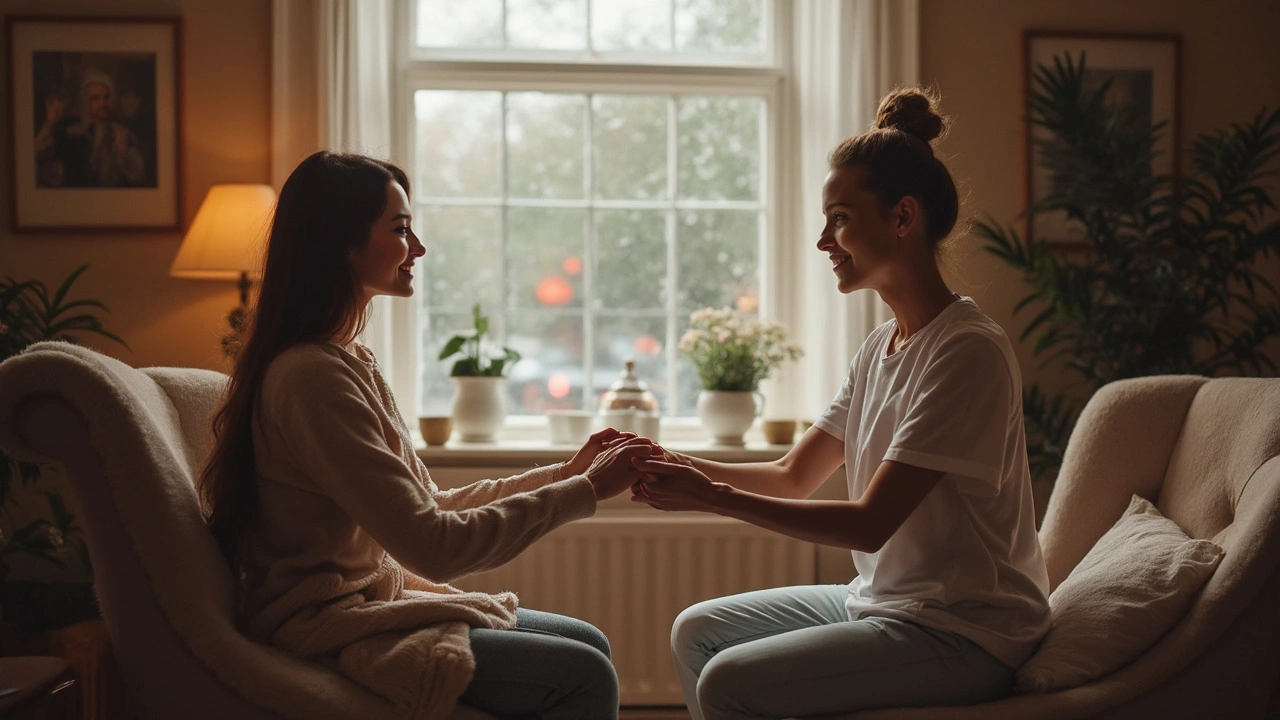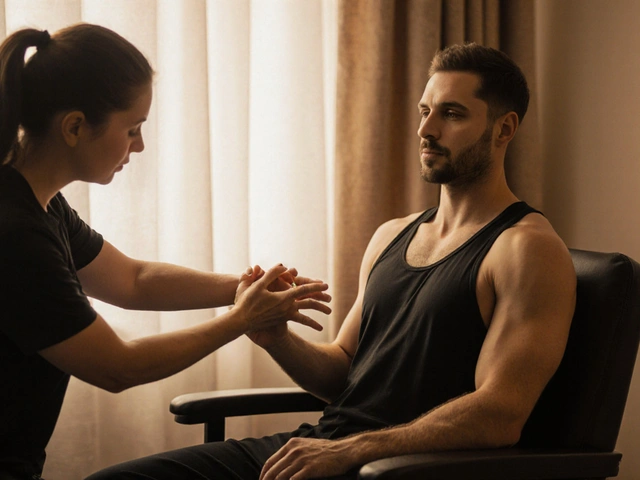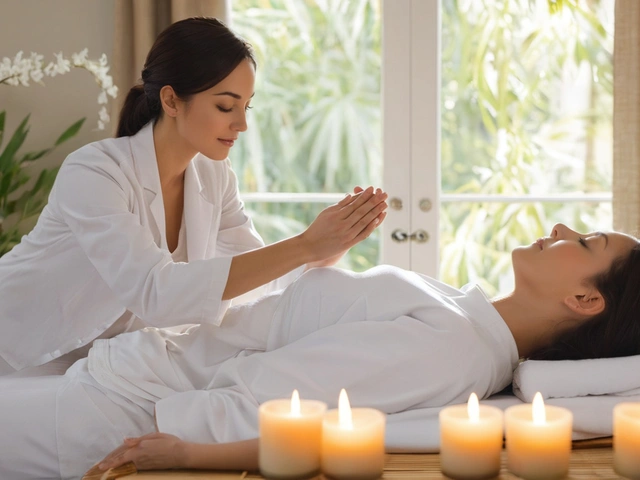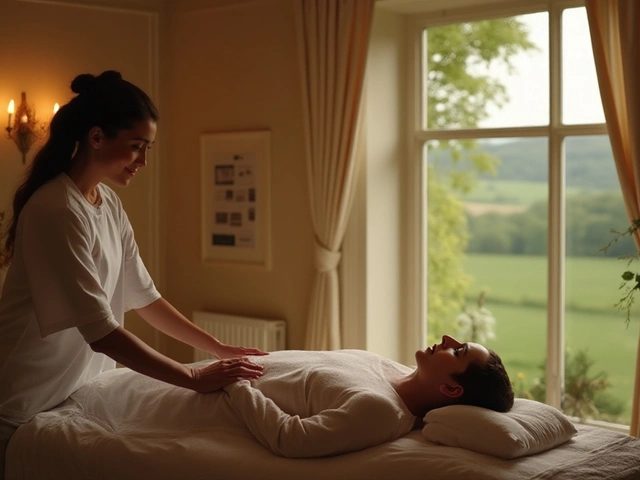Blind Massage: What Sets It Apart as a Healing Technique?

If you think all massages feel the same, think again. Blind massage flips the script. Therapists who are visually impaired rely on their hands in a way most people don't. Every movement is precise because their sense of touch gets dialed up—almost like a superpower.
A lot of people who’ve tried blind massage say it feels more attentive. Therapists often catch knotted spots or tight muscles that others might miss. Why does this happen? Without sight, their hands are their eyes. They pay attention to little things most folks overlook.
Some therapists start learning the techniques in schools designed for the blind. They spend hours practicing on real people, not just textbooks, until they can read your muscles like braille. One therapist shared that after years in the field, she could pick up on a client’s stress level just by touching their shoulders.
People walk in looking for pain relief or stress relief, and walk out surprised by how focused and effective the treatment feels. If you’re hunting for a massage that goes deeper than skin-level, this approach might just be your best bet.
- How Blind Massage Works
- The Unique Skills of Blind Therapists
- Benefits for Clients
- Choosing the Right Blind Massage Therapist
How Blind Massage Works
Blind massage isn’t about fancy tools or high-tech gadgets. It’s hands-on and straightforward. Blind therapists often train at specialized schools, where they learn the basics of anatomy, physiology, and hands-on practice from day one. What stands out is the amount of time spent learning through touch—they focus way more on feeling than following diagrams or charts.
During a session, a blind massage therapist uses carefully practiced techniques to feel muscle tension, tight spots, and areas of heat or discomfort under the skin. Since they’re not distracted by sight, they can pay full attention to what’s going on below the surface. This focus lets them find problem areas some others might miss.
The process is usually simple:
- The client explains any pain or tension points.
- The therapist starts with gentle touch, scanning muscles and joints.
- Using pressure, kneading, and sometimes acupressure or shiatsu, they work on muscles to release knots and relieve pain.
- They might ask for feedback throughout, fine-tuning pressure or technique for each person.
Sanitation and privacy are always top priorities. Schools for blind massage therapists drill good hygiene practices and ensure therapists respect boundaries. Most sessions run from 30 minutes to an hour, but it’s common for clients to add extra time because they’re genuinely impressed by how much the therapist finds and fixes.
No two sessions are identical. Because blind massage relies so much on real-time feedback and the therapist’s touch, every experience feels personal and unique.
The Unique Skills of Blind Therapists
Blind massage therapists stand out because their sense of touch is incredibly sharp. When you can’t see, your body adapts in cool ways—your hands basically become full-on sensors. Researchers at Harvard found blind people’s brains actually rewire so the part used for vision supports other senses, especially touch. That’s a real game-changer when it comes to hands-on work like massage.
It’s not just natural talent, though. Most blind therapists train hard. Many go through special programs at massage schools tailored for the blind, where they learn everything from anatomy to safely working with all types of bodies. They practice feeling for muscle tightness, reading slight temperature changes under the skin, and recognizing tension spots faster than most could see them.
- Heightened sense of touch: Some therapists can pick up on muscle knots or scar tissue that sighted therapists might miss.
- Improved listening: Because they depend less on visuals, blind therapists pay closer attention to what their client’s body is saying and what clients describe.
- Detailed memory: Without visual cues, they rely on remembering how a person’s body feels session-to-session, making each massage more personal.
To get a better idea, check out this quick data overview:
| Skill | Blind Therapists | Sighted Therapists |
|---|---|---|
| Muscle sensitivity | Very high | High |
| Visual assessment | Low | High |
| Client communication | Strong focus | Moderate |
| Customized technique | Frequent | Occasional |
All these skills combine to make blind massage a treatment with a serious edge. Instead of relying on what they see, blind therapists trust what they feel — and that makes a massive difference during a session.

Benefits for Clients
There’s a reason more people are paying attention to blind massage—the results just feel different, and not in a small way. A lot of clients talk about how blind therapists can zero in on muscle tension quickly and don’t miss a thing. This isn’t just talk; touch sensitivity in the blind has actually been studied and proven higher than in sighted folks. Their fingers pick up on tiny changes in muscle and skin, which means no tense spot gets ignored.
So what do you actually get as a client? First, targeted relief. Therapists find knots and tightness even you might not know about. Second, the pressure feels spot-on. Because blind therapists focus on what their hands feel, adjustments are quick and decisions are based on exactly how your body reacts, not on what’s "supposed" to work.
- Better pain relief: A lot of people with chronic pain or stubborn muscle issues say their regular appointments make a big difference in how they feel day to day.
- Stress reduction: Massage naturally helps with stress, but clients often feel extra relaxed, saying sessions are more focused and free from distractions.
- Boost in circulation: Improved blood flow is a given, which helps with healing and lowers inflammation.
- Personal connection: Therapists often check in throughout the session to make sure you’re comfortable, leading to a more tailored experience.
Curious about how clients feel? Here’s a quick breakdown from recent survey data gathered in 2024 from blind massage clinics:
| Benefit | % of Clients Reporting Improvement |
|---|---|
| Pain Relief | 83% |
| Stress Reduction | 79% |
| Better Sleep | 66% |
| Improved Flexibility | 52% |
Blind massage also shatters stereotypes. Many clients mention how empowering the experience feels—not just for them, but seeing blind therapists crush expectations about what’s possible. So, you walk out not just feeling less pain and stress, but also with a story worth sharing.
Choosing the Right Blind Massage Therapist
Picking the right person for your blind massage isn’t just about checking a box—it makes all the difference in getting real results for your body. Not all therapists have the same training or style, so it pays to know what to look for before you book.
First up, check for certification. In most countries, certified blind massage therapists must complete official training. In China, for example, there are over 70,000 licensed blind massage practitioners recognized by the government. They attend specialized schools where they learn anatomy, physiology, and hands-on techniques tailored for people with vision loss.
Here’s a handy list to guide your search:
- Ask about training and massage school background. Don’t be shy—most therapists are happy to share their story.
- Check if they’re certified or licensed locally. This info should be easy to get from the clinic or therapist.
- Look for reviews that mention specific issues like back pain, headaches, or stress relief. Feedback on their approach is key.
- See if you can chat before booking. Ask how they customize their massage and which techniques they use most often.
If you’re curious how often people actually go to blind massage therapists, take a look at these numbers:
| Country | Blind Massage Clinics (Approx.) | Certified Practitioners |
|---|---|---|
| China | 30,000+ | 70,000+ |
| Thailand | 3,000+ | 10,000+ |
| USA | Few cities | Undisclosed |
Keep one more thing in mind: Even the best blind massage therapist isn’t a mind reader. Be open about where you carry tension or if you need a lighter or deeper touch. Clear communication helps you get the best experience and makes the therapist’s job easier, too.
With these tips, landing a therapist who fits your needs gets a whole lot easier. And chances are, you’ll notice the difference from your first session.





